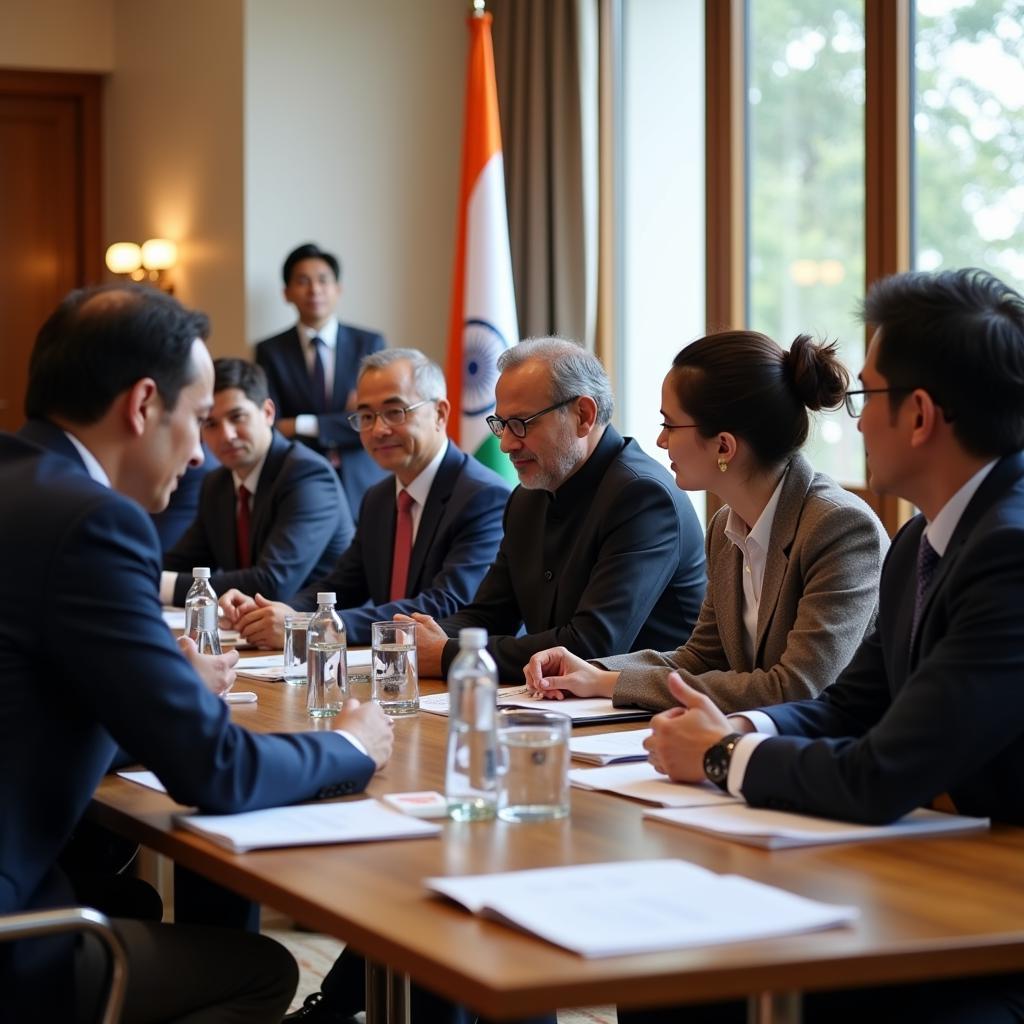ASEAN EMT forces, or Emergency Medical Teams, play a crucial role in disaster response and preparedness within the Southeast Asian region. This article delves into the importance, structure, and future of these vital teams, highlighting their contribution to regional stability and resilience.
The establishment of ASEAN EMT forces reflects the region’s commitment to collaborative disaster management. These teams are trained to provide rapid medical assistance following natural disasters, pandemics, and other emergencies. They embody the spirit of ASEAN unity, providing critical support when and where it’s needed most.
The Significance of ASEAN EMT Forces in Disaster Response
ASEAN nations are vulnerable to a wide range of natural disasters, from earthquakes and typhoons to floods and volcanic eruptions. The quick deployment of well-equipped and trained medical teams is essential to saving lives and mitigating suffering in the aftermath of these events. ASEAN EMT forces provide a coordinated and efficient response mechanism, ensuring that affected countries receive timely medical assistance.
- Rapid Deployment: EMTs are trained to mobilize quickly, reaching disaster-stricken areas within hours.
- Specialized Skills: These teams comprise medical professionals with expertise in emergency medicine, trauma care, and public health.
- Regional Cooperation: ASEAN EMT forces foster collaboration between member states, strengthening regional disaster preparedness.
- Capacity Building: The initiative promotes the development of national EMT capacities within each ASEAN country.
Structure and Organization of ASEAN EMT Forces
The ASEAN EMT Initiative establishes a framework for standardizing and coordinating EMTs across the region. This includes guidelines for training, equipment, and deployment procedures, ensuring interoperability and efficiency. The initiative also emphasizes the importance of national ownership and leadership in developing and maintaining EMT capacities.
National EMTs: The Building Blocks of Regional Response
Each ASEAN member state is responsible for developing and maintaining its own national EMTs. These teams form the foundation of the regional response network. Regular training and exercises are conducted to ensure preparedness and maintain high standards of medical care.
The ASEAN EMT Network: Connecting Regional Resources
The ASEAN EMT Network facilitates communication and coordination between national EMTs. This network allows for rapid information sharing and resource mobilization during emergencies, ensuring a cohesive and effective regional response.
The Future of ASEAN EMT Forces
The ASEAN EMT initiative is continuously evolving to meet the growing challenges of disaster management in the region. This includes incorporating new technologies, strengthening regional partnerships, and expanding the scope of EMT services.
- Technology Integration: Utilizing telemedicine and other technological advancements to improve communication and access to medical care in remote areas.
- Enhanced Training: Developing specialized training programs to address specific regional needs, such as responding to pandemics and climate-related disasters.
- Public Awareness: Raising public awareness about the role of EMTs and the importance of disaster preparedness.
Strengthening Partnerships: Collaboration Beyond ASEAN
Building partnerships with international organizations and other regions to share best practices and enhance regional disaster response capabilities.
Conclusion
ASEAN EMT forces are a vital component of the region’s disaster management strategy. By promoting collaboration, capacity building, and continuous improvement, the initiative contributes significantly to saving lives and building a more resilient ASEAN. These forces represent a tangible demonstration of regional solidarity and a commitment to protecting the well-being of all ASEAN citizens.
FAQ
- What are ASEAN EMT forces?
- How do ASEAN EMT forces contribute to disaster response?
- How are ASEAN EMT forces organized?
- What are the future goals of the ASEAN EMT initiative?
- How can I get involved in supporting ASEAN EMT forces?
- What qualifications are required to join an ASEAN EMT?
- How do ASEAN EMT forces collaborate with international organizations?
Need help? Contact us 24/7:
Phone: 0369020373
Email: aseanmediadirectory@gmail.com
Address: Thon Ngoc Lien, Hiep Hoa, Bac Giang, Vietnam.
